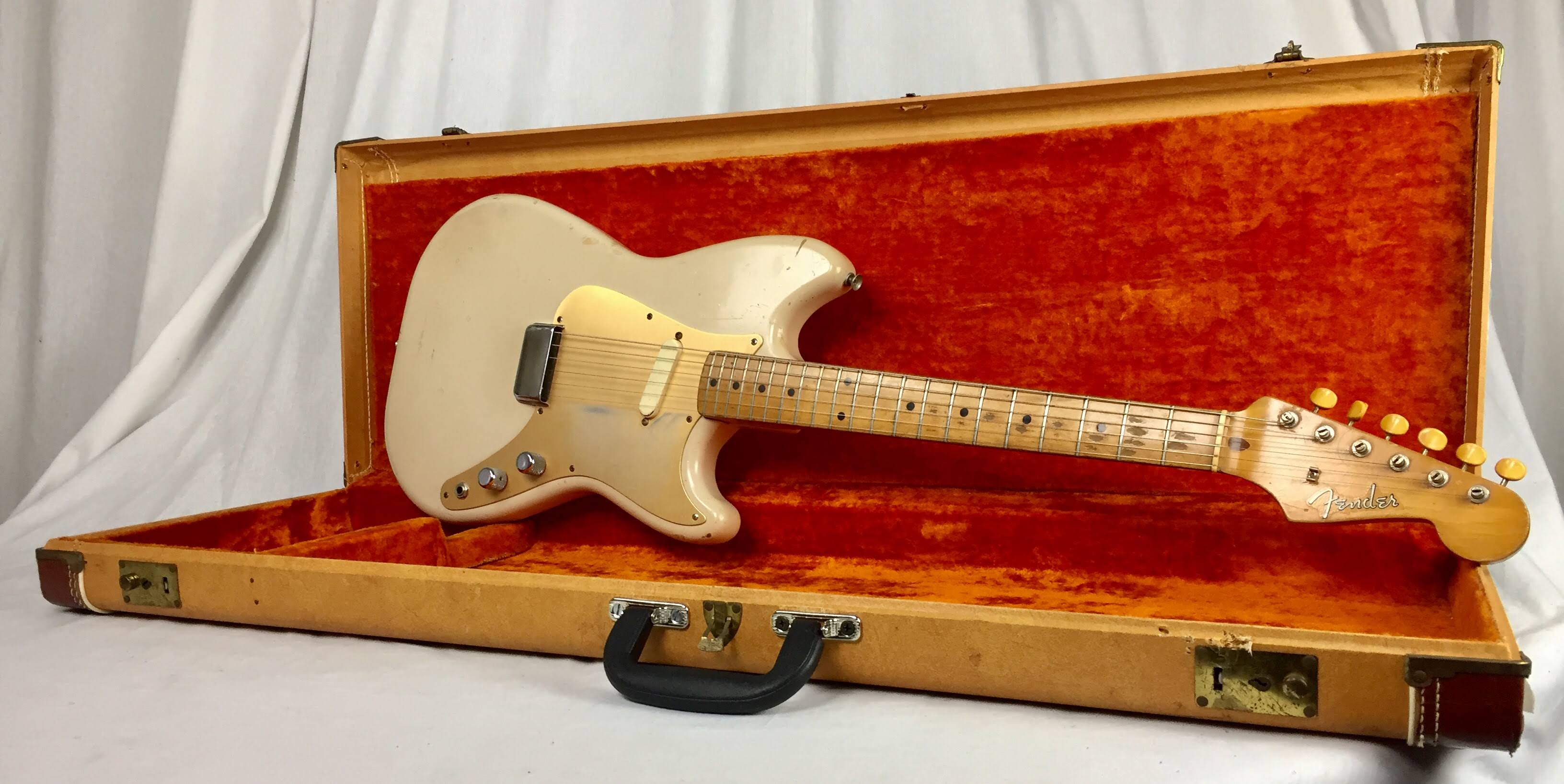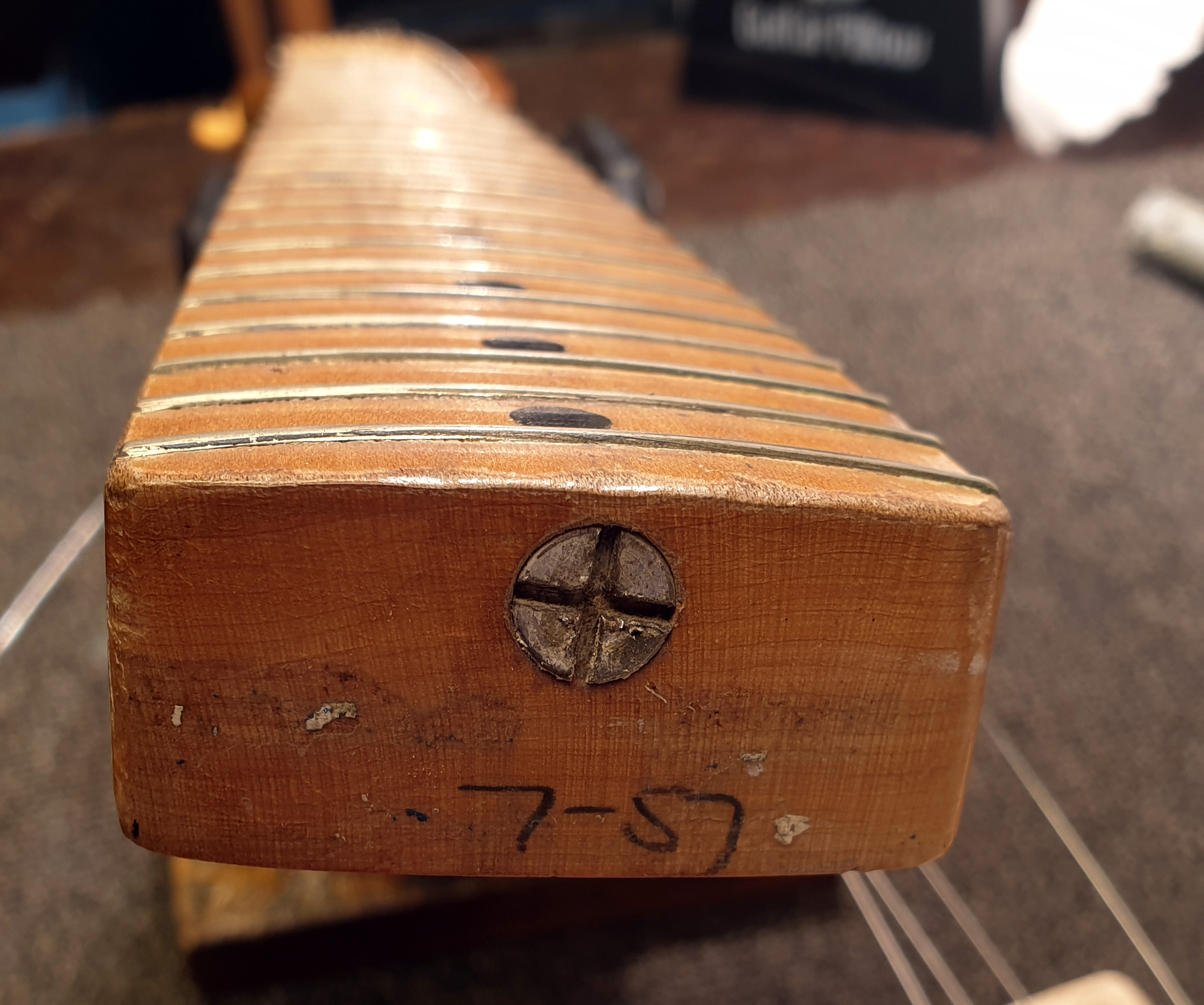
The Telecaster sounded great but wasn’t especially comfortable to play because its squared-off body dug into the player’s body and picking-hand forearm. It had not one or two but three pickups, with switching and controls that created great tonal versatility (although, curiously, the switching configuration allowed only three of several possible pickup combinations).Ī triple-pickup configuration wasn’t the Stratocaster’s only first. To compete with more high-end instruments from other manufacturers-particularly Gibson’s Les Paul, introduced in 1952 in response to what Randall once called the “plain Jane” Telecaster-the Stratocaster was a marked step up in design and innovation for Fender. The new guitar thus combined features of Fender’s first two instruments of the 1950s, and in another important development in early 1953, Fender sales chief Don Randall came up with a name for it: the Stratocaster.

In spring of that year, however, new arrival Freddy Tavares sketched out a new body shape that sleekly adapted Leo’s balanced two-horned shape for the Precision Bass. The new guitar certainly owed several design elements to its predecessor, though, and as late as early 1953 its body shape closely resembled that of the Telecaster.

Guitarist Rex Gallion, seen here in Leo Fender’s lab in early 1954 with a very early Stratocaster model, is often credited with suggesting the guitar’s comfortable contours. He and his closest staff spent long hours developing and perfecting the new model, which quickly shaped up to be its own instrument rather than an improved version of the Telecaster.

A practical person, he just wanted to build a better guitar. It’s not like Leo Fender was trying to be radical and revolutionary. "How was such an ultimately dominant product created by a newcomer to the business who seemed to have several strikes against him? Leo Fender wasn’t a serious musician, had little background (or interest) in the traditional crafts or lore of instrument building, and was even less interested in associating with the old-boy network of acquaintances who ran the major guitar companies and might have helped him get on his feet." Perhaps author Tom Wheeler put it best when, in his indispensable history The Stratocaster Chronicles, he asked: Long-held conventions of design and method meant little if anything to Leo, which likely goes a long way in explaining the genesis of an instrument as extraordinary as the Stratocaster. Work on elements such as new pickups and a new bridge was certainly well under way by late 1952.
1957 FENDER MUSICMASTER FOR SALE FULL
A scrappy little post-war West Coast upstart that was only seven years old and led by a taciturn self-taught electronics tinkerer, Fender had already introduced two revolutionary instruments-the Telecaster and Precision Bass guitars-plus a full line of well-regarded steel guitars and a small handful of loud, rugged and stylish amps that were the best available.įender was small in the early 1950s, but clearly going places, and it’s possible that Leo Fender turned his attention in earnest to a new electric guitar model to succeed the Telecaster and compete with more upscale competitors as early as 1951. Let’s go back to that original era and have a look at the early years of what would one day be the world’s greatest electric guitar.įender had made promising inroads into the stodgy old U.S. Indeed, for about its first 10 years or so, the Stratocaster patiently bided its time while the world caught up with it. It took quite a while, in fact, because if it’s true that the guitar was so well designed from the start that it has basically remained the same for six decades, it’s also true that it was so well designed that it was ahead of its time by at least a decade. The Stratocaster had to earn its place, and it happened neither easily nor overnight. Been that way for quite a while now.īut it wasn’t always like that. It has risen above its everyday function to become a cultural symbol for creativity, individuality, artistry and more than a little exuberant rebelliousness. Ubiquitous and essential, the Stratocaster has transcended its original intended purpose as a tool (a stylish one, at that) to become such an archetype.

Maybe that’s because it was so well designed to start with that it has existed largely unchanged for 60 years now, allowing it to become an ingrained form in the minds of successive generations. The Fender Stratocaster is the quintessential electric guitar-a worldwide archetype the basic form that leaps to mind at the very mention of the phrase electric guitar even among those who don’t play.


 0 kommentar(er)
0 kommentar(er)
